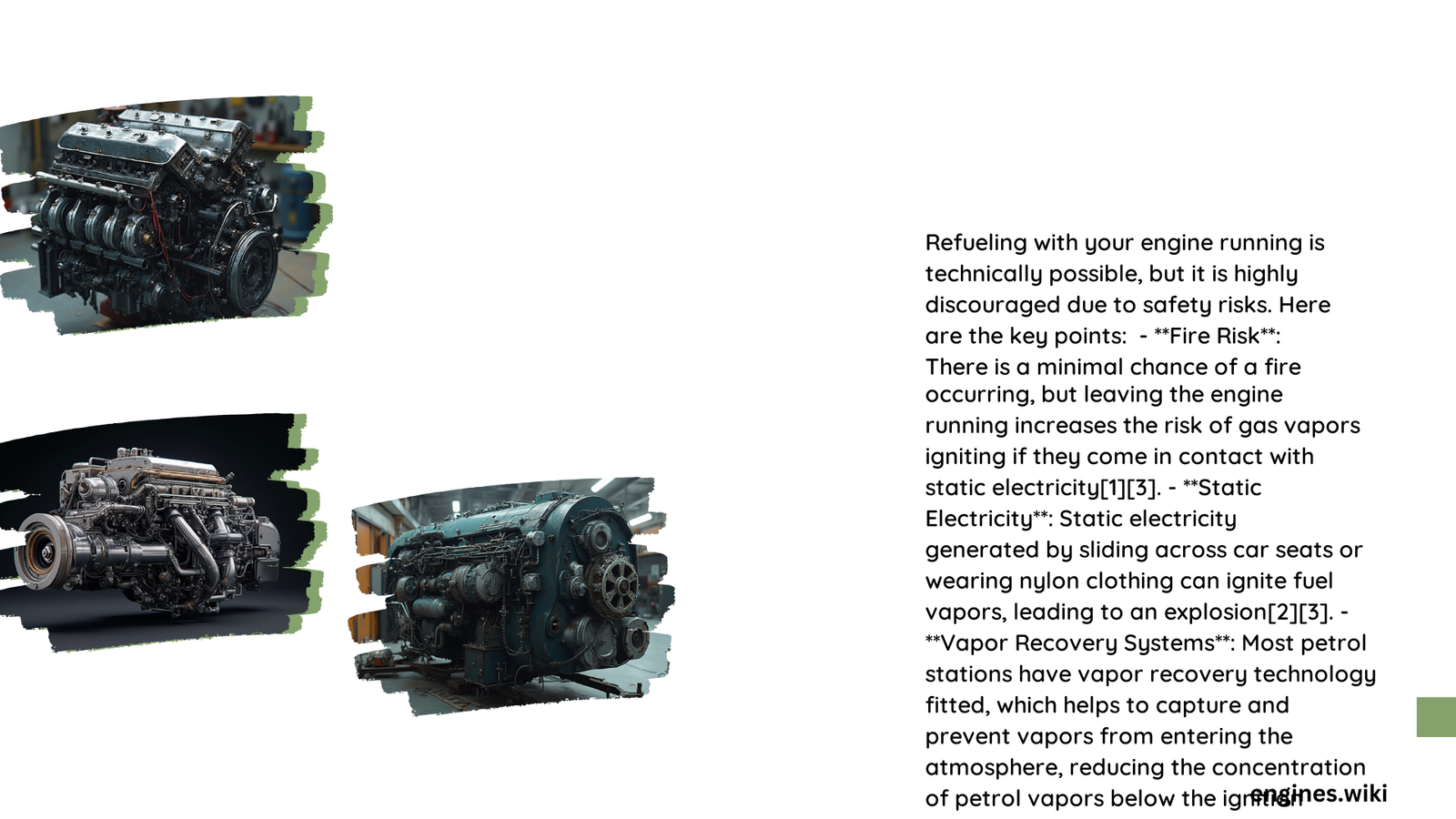Refueling with an engine running poses significant safety risks that can lead to potential fire hazards, environmental contamination, and legal violations. Vehicle owners must understand the critical importance of shutting down their engine completely before approaching a fuel pump, as static electricity, heat from engine components, and potential electrical sparks can create dangerous conditions that might result in unexpected fuel ignition.
What Happens When You Refuel with an Engine Running?
Why Should I Turn Off My Vehicle Before Refueling?
Turning off your vehicle before refueling is not just a recommendation—it’s a critical safety protocol mandated by multiple regulatory bodies. Here’s why:
- Fire Prevention
- Gasoline vapors can ignite at temperatures around 536°F
- Engine components like catalytic converters can reach extremely high temperatures
-
Static electricity increases ignition risks
-
Legal Compliance
- International Fire Code requires engine shutdown during fueling
- Most states enforce strict regulations about engine status during refueling
What Are the Specific Risks of Refueling with an Active Engine?
| Risk Category | Potential Consequences | Probability |
|---|---|---|
| Fire Hazard | Fuel vapor ignition | High |
| Static Electricity | Unexpected sparks | Moderate |
| Environmental Damage | Potential fuel spills | Low-Moderate |
How Do Static Electricity and Fuel Vapors Interact?
Static electricity represents a significant yet often overlooked danger during refueling. When you enter and exit your vehicle, friction generates electrical charges that can potentially create sparks. These microscopic sparks can ignite fuel vapors, leading to dangerous situations.
What Do Safety Organizations Recommend?
Organizations like the National Fire Protection Association (NFPA) and Occupational Safety and Health Administration (OSHA) provide clear guidelines:
- Complete Engine Shutdown: Always turn off your vehicle
- Avoid Re-entering Vehicle: Stay near the fuel pump during refueling
- Discharge Static Electricity: Touch a metal surface before handling the fuel nozzle
Are There Real-World Statistics Supporting These Recommendations?
According to the Petroleum Equipment Institute:
– Nearly 50% of gas station fires occur during refueling
– Static electricity contributes significantly to these incidents
– Approximately 56% of fuel station accidents involve vehicle fires
What Should You Do to Ensure Safe Refueling?
- Turn off the engine completely
- Put the vehicle in park
- Engage the parking brake
- Exit the vehicle
- Touch a metal surface to discharge static
- Proceed with refueling
- Avoid re-entering the vehicle during fueling
Can Modern Vehicle Electronics Change These Recommendations?
Despite advanced automotive technologies, the fundamental safety principles remain unchanged. Modern vehicles with start-stop systems still require complete shutdown during refueling to minimize potential risks.
What Are the Potential Legal and Insurance Implications?
Refueling with an active engine could:
– Void insurance claims
– Result in potential fines
– Create liability in case of accidents
Conclusion

The answer to “Can I refuel with my engine running?” is a definitive NO. The risks far outweigh any perceived convenience, and following proper safety protocols takes mere seconds but can prevent potentially catastrophic consequences.
